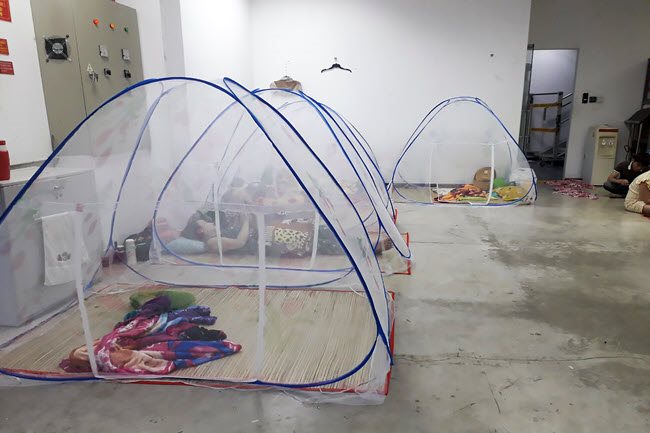
While migrant workers in Singapore have no choice but to bear the harsh living conditions, those in Vietnam will not accept them since they still have social relations beyond their companies - PHOTOS: THANH HOA
As the Covid-19 pandemic worsens in Vietnam, it is difficult to strike a balance between protecting the community’s health and minimizing supply chain disruption in localities that adopt social distancing. A compromise is to let enterprises continue production if some conditions are satisfied. Is this advisable, especially in the long run (possibly months)? What are the necessary factors for the successful adoption of this strategy on a large scale?
To begin with, it is worth considering the experience of regional countries such as Malaysia and Singapore.
Production under restrictions
On May 28, 2021, Malaysia declared it would impose a nationwide lockdown from June 1. The first phase was from June 1 to June 14. During this period, only five essential services and 12 sectors were allowed to operate. The five essential services included health care, telecommunications, the media, banks and public utilities (electricity, water and so on). The 12 sectors included food and beverages, medical equipment, textile for personal protective equipment, oil, etc. Firms in these sectors had to operate at 60% of their capacity.
If the first phase were to succeed, the second phase would last four weeks, under which sectors without crowd gatherings would be allowed. In the third phase, travel would still be restricted, social gatherings would not be allowed and most economic sectors would be in operation with limits on the number of people in the workplace.
The shift from one phase to another would depend on the number of infected cases, Covid-19 treatment capabilities and the Ministry of Health’s assessment. The Government will also boost vaccination to achieve herd immunity.
On May 14, Singapore declared that it would adopt strict measures to prevent crowd gatherings from May 16. Only groups of two were allowed, whether they were from the same family. Dining in was banned while takeaway food was allowed. Working from home was the default mode as far as possible.
Enterprises must stagger arrival times for employees who need to report to the workplace (at least half of them must arrive after 10 a.m.). Flexible working and rest hours are systematically arranged to avoid crowds. Social gatherings at the workplace are banned and work-related events are to be avoided. Employees must consume their meals at their own cubicles. Firms cannot deploy staff to different work locations. It is compulsory to wear masks, maintain hygiene and safe distancing to avoid infections at work, and make declarations via electronic devices to support contact tracing.
Each sector has its own requirements pertaining to Covid-19 management. For example, sectors that rely on migrant workers (who reside in dorms) such as construction and shipping face many restrictions—for example, workers cannot eat in the dining hall, but bring the food to their rooms (where there are many people), and cannot gather along corridors. They can only leave their rooms for toilet visits. Some compare the dorms to prisons. This has persisted with little change since the circuit breaker in April 2020. It is worth noting that migrant workers are vaccinated even before many locals.

Vietnam seems to give enterprises more say in whether to continue operating. It is therefore essential for the country to list sectors allowed to open and, if so, how far capacity and the number of employees at the workplace must be trimmed.




